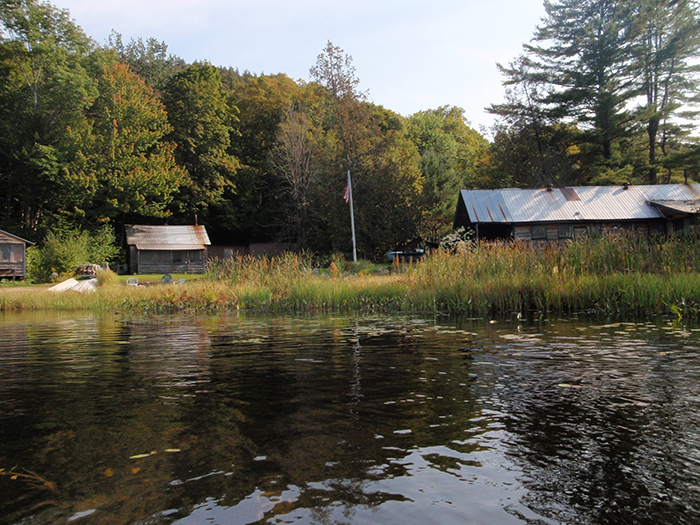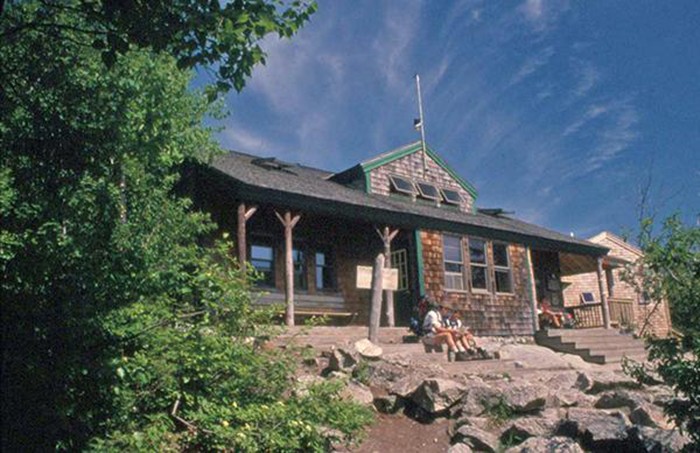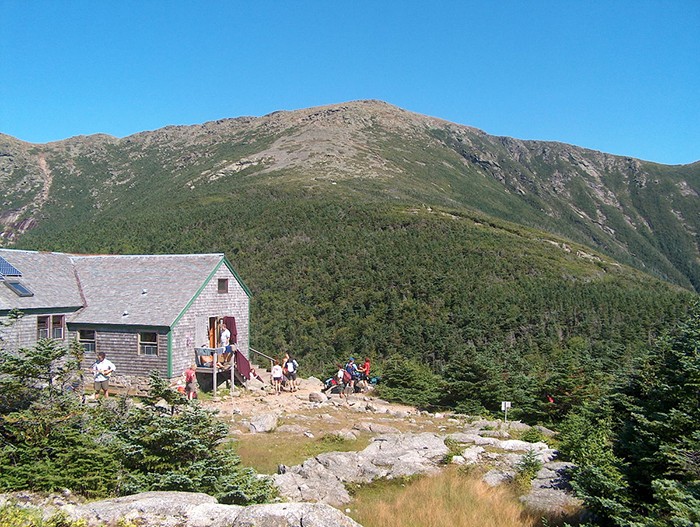Buildings on the Forest Preserve are limited by state laws, regulations and policies to administrative and historic preservation purposes. The biggest looming threat to the Forest Preserve is the proposal to expand allowable buildings to include public lodging structures through some kind of formal hut-to-hut system. The final report issued by Adirondack Community-based Trails and Lodging recommends four instances where Forest Preserve lands were included for “hut” locations as necessary stops for one of their proposed 59 hut-to-hut trips. In this way, the checkerboard pattern of public and private lands through the Adirondack Park has created opportunities to use private lands and existing lodging facilities. Public lodging facilities, beyond campsites and lean-tos, are not allowed under existing state law on the Forest Preserve. The only way that some kind of hut-to-hut network could be created on the Forest Preserve, akin to what exists in the White Mountains National Forest, is through a Constitutional Amendment.
This article is third in a series looking at the issue of buildings on the Forest Preserve. The first dealt with buildings used for administrative purposes and the effort to retain the inner Gooley Club. The second focused on buildings that are classified as Historic and how this group of buildings is growing. This article examines the threat of public lodging facilities on the Forest Preserve.
As with many things on the Forest Preserve, the heart of the matter is found in the Constitutional requirement that Forest Preserve lands are to be kept “forever wild.” Article XIV, Section 1, the famed forever wild provision, of the NYS Constitution states: “The lands of the state, now owned or hereafter acquired, constituting the forest preserve as now fixed by law, shall be forever kept as wild forest lands. They shall not be leased, sold or exchanged, or be taken by any corporation, public or private, nor shall the timber thereon be sold, removed or destroyed.” A simple read of this section shows that buildings are not allowable, but the history of management of the Forest Preserve is anything but simple.
Today, buildings on the Forest Preserve are limited to two uses by longstanding state policy: 1) state administration as necessary facilities for Forest Preserve management; 2) educational and historic preservation purposes. Advocates are now openly pushing for a third class of buildings: public lodging.
The Adirondack Park State Land Master Plan has worked effectively for 45 years to protect the natural resources and manage public recreational use on the Forest Preserve. The SLMP is unequivocal on the matter of cabins or “glamping” tent platforms on the Forest Preserve for public use. They are not allowed.
Three definitions shape Master Plan prohibitions on cabins for public use on the Forest Preserve:
19. Improvement – any change in or addition to land, which materially affects the existing use, condition or appearance of the land or any vegetation thereon, including but not limited to foot, horse, and bicycle trails, roads, administrative roads, snowmobile trails, cross country ski trails, improved cross country ski trails, trail heads, picnic areas and individual primitive tent sites. (p 18)
29. Ranger Stations or Ranger Cabins – enclosed buildings constructed or maintained by the Department of Environmental Conservation, suitable for human habitation and manned seasonally or year-round by administrative personnel to facilitate administrative control of lands and public use thereof under the jurisdiction of the Department. (p 19)
36. Structure – any object constructed, installed or placed on land to facilitate land use, including but not limited to bridges, buildings, ranger stations or ranger cabins, sheds, lean-tos, pit privies, picnic tables, horse barns, horse hitching posts and rails, fire towers, observer cabins, telephone and electric light lines, mobile homes, campers, trailers, signs, docks and dams. (p 20)
These definitions make it clear that the only time that buildings are allowable on the Forest Preserve is if they are used for state administrative purposes and used by administrative personnel. No buildings are allowed for public residential use. The only buildings allowed on the Forest Preserve are for administrative purposes, such as the caretaker’s cabins at Lake Colden or Raquette Falls or the various buildings used by Rangers and seasonal DEC staff at the state Administrative area at Little Tupper Lake, among others.
The Master Plan also provides clear direction on the question of new structures of the Forest Preserve:
Insofar as forest preserve lands are concerned, no structures, improvements or uses not now established on the forest preserve are permitted by these guidelines and in many cases more restrictive management is provided for. (p 16)
This passage makes it clear that the Master Plan does not contemplate new structures or improvements being allowed on the Forest Preserve where they are not currently established. This passage prohibits some form of hut-to-hut facility on the Forest Preserve.
The issue of “tent platforms” has been raised by hut-to-hut advocates with regards to creating some form of “glamping” facility. The Master Plan is clear that tent platforms are not allowed on the Forest Preserve. The Master Plan defines as tent platform as:
37. Tent Platform – a platform, with or without walls and other attachments, erected as a base for tenting or similar camping activity. (p 20)
A tent platform is listed as a “non-conforming use” in Wilderness Areas. (p 24) Because tent platforms are prohibited in Wilderness Areas they are also prohibited in Primitive and Canoe Areas. The Wild Forest Area section of the SLMP states “The Department of Environmental Conservation having removed all tent platforms previously existing under Department permit, erection of new tent platforms will be prohibited.” (p 40) As such, tent platforms are not allowed in Wild Forest areas either.
For all the reasons stated above, the Master Plan is explicit that hut-to-hut style facilities for public use, whether they be tent platforms, glamping facilities, yurts of some form of other structure are prohibited.
Public use of cabins across the Forest Preserve was voted down in a proposed Constitutional Amendment in 1932. The proposed Porter-Brereton Recreation Amendment, which came to be known as the “Closed Cabin Amendment,” would have allowed for the “clearing of timber” on the Forest Preserve in the Adirondacks and Catskills for the construction of “recreational facilities”. The vague language was a deliberate loophole to allow any number of things. The famed John Apperson-Paul Schaefer partnership rallied opposition, organizing over 150 organizations in a vote no campaign, including support from the newly formed Adirondack Mountain Club and Association for the Protection of the Adirondacks. Governor Franklin Delano Roosevelt also opposed the amendment. One of the most persuasive arguments in 1932, which still rings true today, was that the private lands in the Adirondacks offered all manner of public accommodations and that the heart and soul of the Adirondack Forest Preserve was as a place where people could experience wild nature.
The Closed Cabin Amendment sought to authorize the Conservation Department with new authority for “the construction of such recreational facilities as are not inconsistent with the general wild forest character of the Forest Preserve and the making of necessary clearings of timber therefor.” This chapter in Forest Preserve history is important because it makes clear that the only way buildings for public lodging are possible on the Forest Preserve is through a Constitutional Amendment.
Use of the Forest Preserve by some kind of hut-t-hut network, with facilities akin to the Johns Brook Lodge owned and operated by ADK, would mark a major change in Forest Preserve management. Such facilities must meet all manner of state codes and require serious logistical operations. If the Cuomo Administration seeks to use the Forest Preserve as a location for any kind of hut-to-hut network, an idea that enjoys broad support among the Governor’s aides and the DEC, the only lawful way this can be done is through amending the State Constitution.








